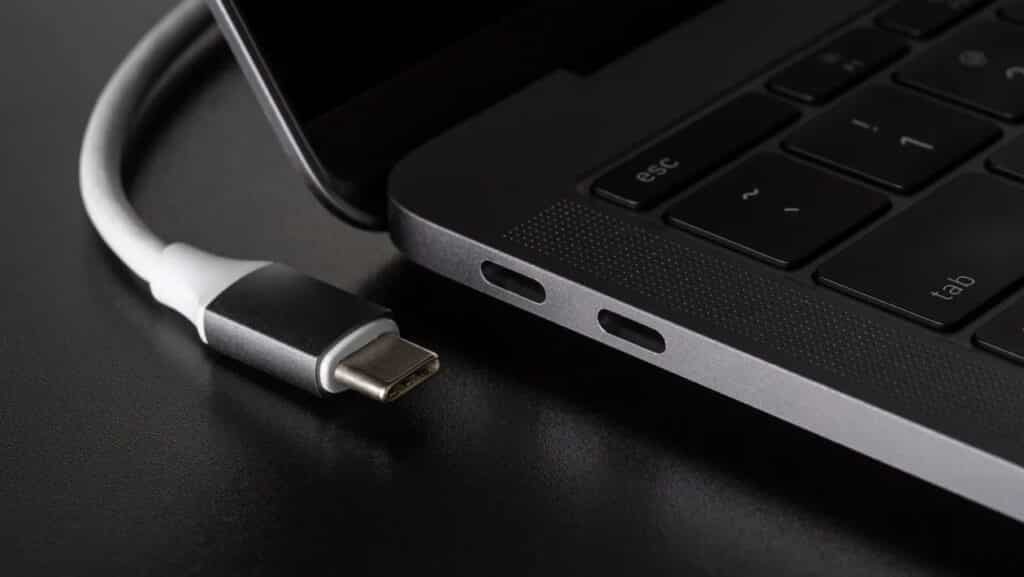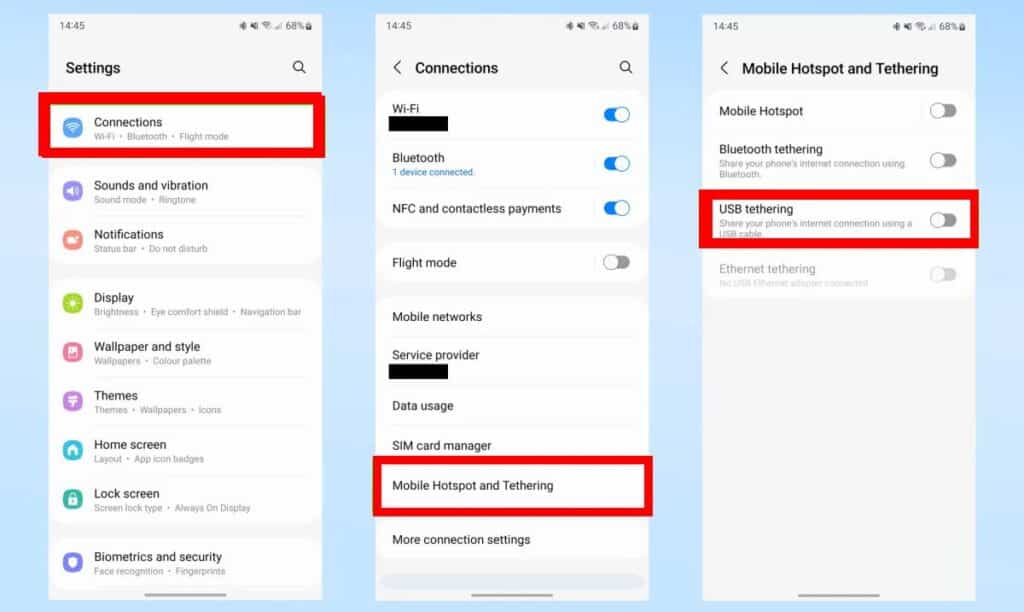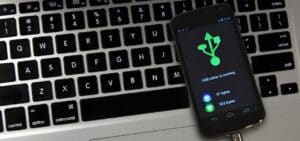Since mobile hotspots are the most popular means to share the web between your phone & another device, you might not know how to share WiFi on Android using USB tethering. If your laptop or other machines can’t utilize WiFi for any reason, or if you’re also connected to an Android to power it or transfer data, it’s a good idea to know how to access the internet using a simple USB cord.
Unfortunately, if you use a Mac, this method will not work. However, an Android device can still use a standard mobile hotspot. However, if you have a Windows device, you can use USB tethering to share the mobile connection of your Android handset.
What will we see here?
Will it be expensive?
You might or might not have to pay for this, depending on your carrier—the majority of the big pages in the US charge extra for Tethering. For more details on your carrier levies fees for Tethering, visit your provider’s website. In the USA, Tethering usually costs an extra $20.
Installing and utilizing a third-party tethering program or, if you’re rooted, unlocking Android’s built-in tethering feature are two ways to get around these limitations. Your carrier may become aware that you are tethering because your laptop’s online traffic differs from your mobile device’s. In this case, they may kindly add a tethering package to your account and charge you the regular tethering fee. Don’t be shocked if they make you spend the tethering cost in that case. If you’re lucky, they might not notice.
Naturally, there are data usage restrictions and fees. Even if your carrier is unaware that you are tethering, you will still be subject to your plan’s standard penalties, such as additional fees or speed limiting if your page offers 2GB of data per month. Hence, you use 3GB of Tethering and your regular smartphone usage.
Finally, tethering rapidly depletes the battery. Tethering should be turned off when not in use to conserve battery life and power on your Android phone.
Wi-Fi on Android using USB tethering: Varieties of tethering
Each tethering technique will explain in detail. This is how they contrast:
Wi-Fi tethering
You can connect to the WiFi network it creates with your computer. Your phone becomes a miniature WiFi hotspot when you use WiFi tethering. It has reasonable speeds and lets you connect several devices, but the battery will discharge faster than if you chose one of the alternatives below.
USB Tethering
The fastest speeds are available with USB tethering, but a USB cable needs to link your smartphone to your laptop. As it will draw power through your computer’s USB port, your phone’s battery won’t discharge.
Wi-Fi on Android using USB tethering: Bluetooth Tethering
While using less battery, Bluetooth tethering is considerably slower than WiFi. Bluetooth Tethering is also limited to one device at a time. It isn’t worth utilizing unless you’re attempting to extend your battery.
There are various methods you might need to tether besides the standard Android options:
Reverse Tethering
Rarely, you might prefer to connect your Android phone to your computer’s Internet connection. This is helpful if only wired Ethernet connections are available in the area and WiFi is unavailable.
Wi-Fi on Android using USB tethering: Tethering apps from third parties
On the phone you purchased from a carrier, Tethering can be disabled, but you can still install third-party apps & use them to tether. If your carrier learns, they might still charge you.
Can USB tethering use to share Wi-Fi?
Most Android handsets support wireless, Bluetooth, & USB data sharing. Using the wireless data on your phone, you may connect a new phone, tablet, or computer to the internet. This method of sharing a connection is known as Tethering and using a hotspot. Some cellphones can share a WiFi connection thanks to Tethering.
Can you tether Wi-Fi?
Open the Settings screen on your phone, select More from the Wireless & Networks menu, and then select Tethering and/or portable hotspot. You may customize the WiFi hotspot on your phone by selecting Set up WiFi hotspot and altering the SSID (name) & password.
How to use USB tethering to connect Wi-Fi on an Android device?

1. Use a USB connection to connect your Android handset to the device you wish to share Wi-Fi with.
2. Use the Settings app to enable USB Tethering on your Android device.
3. A wired internet connection should now show on your second device.
Don’t worry if things seem different or use various names and wording when you attempt this with your own devices with different operating system variants. We’re showing this to use a Samsung Galaxy S22 Ultra running Android 12 or an Honor MagicBook running Windows 11.

1. Get your equipment and connect it with a USB cord. This will probably be a USB-A to USB-C cable, but you can use any USB cable you require depending on your laptop’s and another device’s ports.

2. Look for a USB tethering option in the Settings app on your Android device. This could find in a menu item titled Connections or Network and Internet. The USB Settings menu that appears when you plug in your phone is where you might also locate the USB tethering.
You might have access to a shortcut to all these settings on some phones. To access the appropriate section of the Settings app, tap and hold it. Look for a bubble with the term Wi-Fi Hotspot or something similar in the Quick Settings by swiping down at the top of a screen. Use the previous step to search for the USB tethering setting if you can’t find it.

3. In the settings, enable USB tethering. To activate it, simply tap the slider.
If everything goes according to plan, you’ll notice that your second device now displays an Ethernet-connected internet connection.
Always ensure the mobile hotspot-using device has plenty of data on your phone plan, and remember to turn off the USB rope when not in use. Take it from us: when you browse on a separate device, it’s simple to consume more data than you want!
Conclusion
Public Wi-Fi hotspots have become increasingly prevalent, but neither they nor the internet service connection is always stable. Suppose you need to connect to the internet on another device. Your smartphone is a backup, and you can do so by connecting to its mobile data connection. You can share Wi-Fi on Android using USB tethering.
Many mobile rates offer limitless data as we enter the 5G era. But if you use a metered connection, be mindful of how much extra data this will use. (The battery on your phone will also discharge more quickly.)
Tethering doesn’t require buying additional hardware or taking your phone’s SIM card out. It works on a similar principle as utilizing a mobile WiFi router.

















